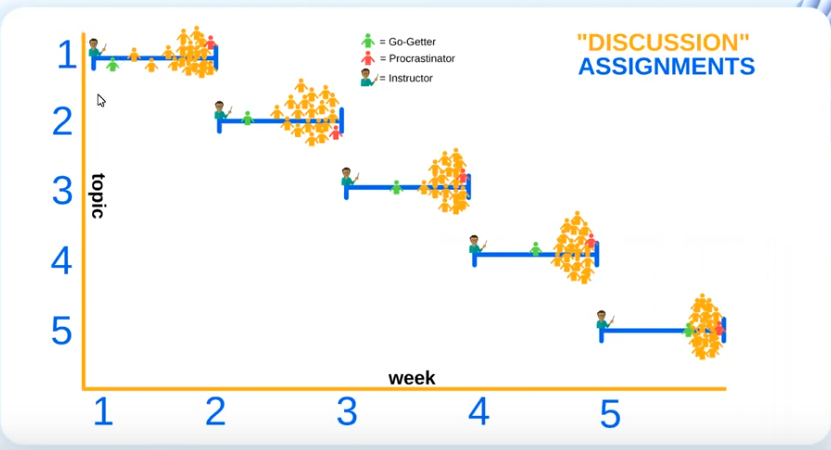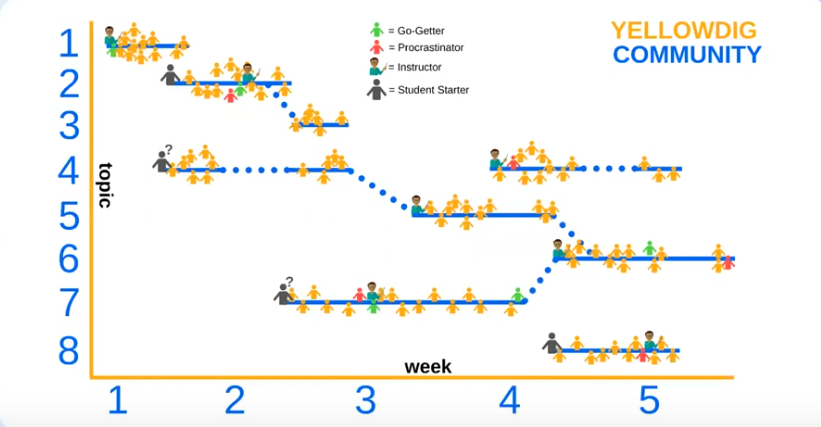Notes from a YellowDig webinar with faculty from Fort Hayes University.
Creating points creates a structure of the board and
identifying value in specific types of activities.
There are two types of interventions instructors can make for a YellowDig board:
1) Board settings (ie points, weekly point max),
2) instructor interventions while course is in session – the number of posts instructors make, comments make and instructor badges.
Influence of points. YellowDig is based on a motivation system. It’s the power of the social engineering and gamification in this platform. When students realize that what they write gathers comments and others start engaging with their writing from others then the quality of their work goes up, their work is more engaging.
Relationship between student actions, board settings and
instructor interventions.
What are minimum number of words set per post or comment? The default setting is not enough (40) and how do they get students to say more? And for comments, too?
Comment/post control is the value that the instructor places on comments. By default comment is worth half of points as a post. Some faculty are taking their “bad experiences’ from regular discussions when students didn’t comment well. Others used MORE points for comments to encourage conversation.
The interaction effect of structure settings had the largest conversation ratio (ie 4 comments per post): settings of all 3 comments (Encouraging comments (pin control), and upvotes and weekly max).
What is it that you want to accomplish on the YD board? See
“formula” on YD webinar with Fort Hayes State University.
- Encourage conversation?
- To encourage conversation you want students to be appropriately awarded for commenting on other posts. It is ok to give equal or more points for comments.
- Encourage reading?
- To encourage reading then consider the points set for a post to be higher.
Instructor participation:
- Instructor posts (Fort Hays recommends 1 post/week by the instructor. They found this to increase the conversation ratio and the reads per post)
- Instructor comments
- The more the instructor comments the more the students will post. It is encouraging the conversation to continue.
- Instructor badges
- When instructors give a badge the conversation ratio increases.
- Suggestion: faculty participate judiciously and positive reinforcement (ie comments and badges) improves student interactions.
- Board settings suppress the influence of instructor participation (The settings you choose before the class starts will have much more of an impact, than what you do when board is active.)
- When students are given agency within the board they enjoy using YellowDig and the quality of posts and comments have gone up.


Recent Comments